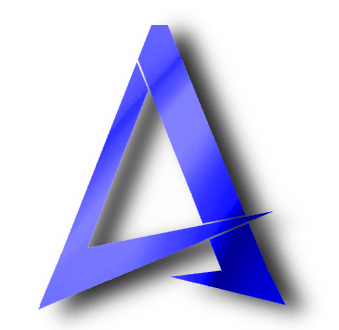Aerion Consensus
Aerion Consensus
Performance Meets Security
Aerion marks a major step forward in distributed consensus design. While embracing Avalanche’s DAG-based concurrency philosophy, Aerion introduces a fundamentally reengineered architecture that implements an optimized, deterministic BFT finality layer and refined DAG construction rules. This ensures robust security guarantees and exceptional performance under challenging network conditions.
Parallel Power
Massive transaction loads are processed through simultaneous validation.
Secure Finality
Anchored checkpoints lock in consensus with cryptographic guarantees.
Transparency
DAG structure enables real-time auditing of all consensus decisions
Leader-Free
Leaderless design eliminates delays and single points of failure.
Pipeline Processing
Aerion optimizes transaction validation through multiple parallel pipelines, significantly reducing validation time, improving overall network performance, and ensuring consistent throughput.
Independent Layers
Aerion’s innovative architecture decouples execution, conflict resolution, and finality into separate layers. Each layer functions concurrently, with independent validation and minimal overhead.
Scalable and Secure Consensus Architecture
Aerion combines the scalability of DAG-based architectures with the deterministic security of BFT. Unlike other protocols that trade throughput for finality or vice versa, Aerion processes transactions concurrently while applying strict BFT validation to each finalized state. This hybrid ensures ultra-secure performance and the system’s ability to handle large transaction volumes in real time.
Performance Optimization
Aerion Consensus offers exceptional performance by combining parallelism and pipelined finality. Multiple consensus instances run concurrently, increasing throughput. Pipelined finality ensures that while one round of consensus is being finalized, others can proceed, minimizing idle time. Efficient vote propagation reduces communication overhead by embedding votes within blocks.
Consult our whitepaper to learn more about Aerion Consensus and discover other innovative solutions from Aerion, with additional insights into our economic model and the long-term vision behind our ecosystem.

Aerion Consensus
Performance Meets Security
Aerion marks a major step forward in distributed consensus design. While embracing Avalanche’s DAG-based concurrency philosophy, Aerion introduces a fundamentally reengineered architecture that implements an optimized, deterministic BFT finality layer and refined DAG construction rules. This ensures robust security guarantees and exceptional performance under challenging network conditions.
Parallel Power
Massive transaction loads are processed through simultaneous validation.
Secure Finality
Anchored checkpoints lock in consensus with cryptographic guarantees.
Transparency
DAG structure enables real-time auditing of all consensus decisions
Leader-Free
Leaderless design eliminates delays and single points of failure.
Scalable and Secure Consensus Architecture
Aerion combines the scalability of DAG-based architectures with the deterministic security of BFT. Unlike other protocols that trade throughput for finality or vice versa, Aerion processes transactions concurrently while applying strict BFT validation to each finalized state. This hybrid ensures ultra-secure performance and the system’s ability to handle large transaction volumes in real time.
Pipeline Processing
Aerion optimizes transaction validation through multiple parallel pipelines, significantly reducing validation time, improving overall network performance, and ensuring consistent throughput.
Independent Layers
Aerion’s innovative architecture decouples execution, conflict resolution, and finality into separate layers. Each layer functions concurrently, with independent validation and minimal overhead.
Performance Optimization
Aerion Consensus offers exceptional performance by combining parallelism and pipelined finality. Multiple consensus instances run concurrently, increasing throughput. Pipelined finality ensures that while one round of consensus is being finalized, others can proceed, minimizing idle time. Efficient vote propagation reduces communication overhead by embedding votes within blocks.
What mechanisms drive Aerion’s exceptional performance at scale?
Aerion achieves high throughput by combining parallel DAG validation, pipelined finality, embedded voting, and a fully leaderless BFT layer. Transactions are validated concurrently across independent conflict sets, avoiding serialization. The finality process is pipelined, so new consensus rounds begin before previous ones finish, maximizing concurrency. Votes are piggybacked onto block propagation, removing extra message rounds. The BFT layer operates without a leader, allowing all validators to progress independently without waiting for coordination. Together, these innovations enable Aerion to sustain exceptional performance while ensuring deterministic safety.
How does Aerion optimize vote propagation in its system?
Aerion reduces vote propagation time by piggybacking vote messages onto regular blocks. This reduces the need for separate vote rounds and decreases the communication overhead, improving the overall speed of consensus. By embedding votes directly in block gossip, Aerion enhances both throughput and efficiency.
What role does pipelined finality play in Aerion’s performance?
Pipelined finality is a crucial design feature in Aerion Consensus. In traditional BFT systems, each consensus round must complete fully before the next can begin. This serial process limits the throughput of the system. Aerion’s pipelined approach allows validators to work on multiple consensus rounds simultaneously, ensuring that while one round is being finalized, other rounds can progress in parallel. This overlapping of consensus stages significantly reduces latency and accelerates finality.
How is finality achieved in Aerion Consensus?
Finality is achieved through a pipelined BFT protocol layered atop the DAG. Instead of a global, sequential finality process, multiple BFT instances operate in parallel across conflict domains. Each instance finalizes a subset of the DAG while others proceed concurrently. Validators embed votes into the blocks they emit, and quorum attainment is verified by observing vote metadata in descendant blocks. Once a quorum is reached, the associated blocks are finalized.
Performance Meets Security
Aerion marks a major step forward in distributed consensus design. While embracing Avalanche’s DAG-based concurrency philosophy, Aerion introduces a fundamentally reengineered architecture that implements an optimized, deterministic BFT finality layer and refined DAG construction rules. This ensures robust security guarantees and exceptional performance under challenging network conditions.
Parallel Power
Massive transaction loads are processed through simultaneous validation.
Secure Finality
Anchored checkpoints lock in consensus with cryptographic guarantees.
Transparency
DAG structure enables real-time auditing of all consensus decisions
Leader-Free
Leaderless design eliminates delays and single points of failure.
Pipeline Processing
Aerion optimizes transaction validation through multiple parallel pipelines, significantly reducing validation time, improving overall network performance, and ensuring consistent throughput.
Independent Layers
Aerion’s innovative architecture decouples execution, conflict resolution, and finality into separate layers. Each layer functions concurrently, with independent validation and minimal overhead.
Scalable and Secure Consensus Architecture
Aerion combines the scalability of DAG-based architectures with the deterministic security of BFT. Unlike other protocols that trade throughput for finality or vice versa, Aerion processes transactions concurrently while applying strict BFT validation to each finalized state. This hybrid ensures ultra-secure performance and the system’s ability to handle large transaction volumes in real time.
Performance Optimization
Aerion Consensus offers exceptional performance by combining parallelism and pipelined finality. Multiple consensus instances run concurrently, increasing throughput. Pipelined finality ensures that while one round of consensus is being finalized, others can proceed, minimizing idle time. Efficient vote propagation reduces communication overhead by embedding votes within blocks.
Consult our whitepaper to learn more about Aerion Consensus and discover other innovative solutions from Aerion, with additional insights into our economic model and the long-term vision behind our ecosystem.
What mechanisms drive Aerion’s exceptional performance at scale?
Aerion achieves high throughput by combining parallel DAG validation, pipelined finality, embedded voting, and a fully leaderless BFT layer. Transactions are validated concurrently across independent conflict sets, avoiding serialization. The finality process is pipelined, so new consensus rounds begin before previous ones finish, maximizing concurrency. Votes are piggybacked onto block propagation, removing extra message rounds. The BFT layer operates without a leader, allowing all validators to progress independently without waiting for coordination. Together, these innovations enable Aerion to sustain exceptional performance while ensuring deterministic safety.
How does Aerion optimize vote propagation in its system?
Aerion reduces vote propagation time by piggybacking vote messages onto regular blocks. This reduces the need for separate vote rounds and decreases the communication overhead, improving the overall speed of consensus. By embedding votes directly in block gossip, Aerion enhances both throughput and efficiency.
What role does pipelined finality play in Aerion’s performance?
Pipelined finality is a crucial design feature in Aerion Consensus. In traditional BFT systems, each consensus round must complete fully before the next can begin. This serial process limits the throughput of the system. Aerion’s pipelined approach allows validators to work on multiple consensus rounds simultaneously, ensuring that while one round is being finalized, other rounds can progress in parallel. This overlapping of consensus stages significantly reduces latency and accelerates finality.
How is finality achieved in Aerion Consensus?
Finality is achieved through a pipelined BFT protocol layered atop the DAG. Instead of a global, sequential finality process, multiple BFT instances operate in parallel across conflict domains. Each instance finalizes a subset of the DAG while others proceed concurrently. Validators embed votes into the blocks they emit, and quorum attainment is verified by observing vote metadata in descendant blocks. Once a quorum is reached, the associated blocks are finalized.


